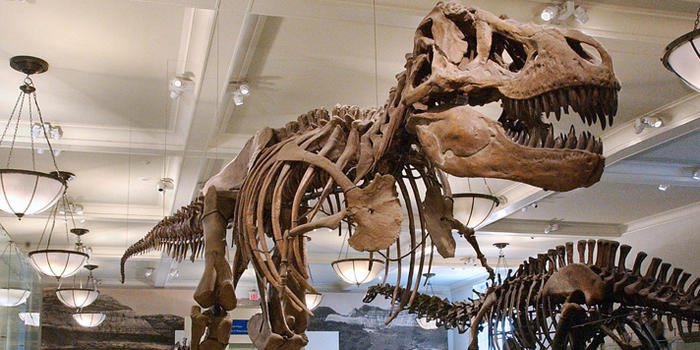
Horrifying ‘sea lizzard’ fossil from dinosaur era discovered
This family of giant marine lizards, known as mosasaurs, are distant relatives of today’s Komodo dragons and anacondas.

The species, named Khinjaria acuta, belonged to the mosasaur family that lived alongside dinosaurs such as Tyrannosaurus rex and Triceratops.
This family of giant marine lizards, known as mosasaurs, are distant relatives of today’s Komodo dragons and anacondas.
The fossils, including a skull, were discovered in a Moroccan mine.
FOSSIL SHOWS ‘DAGGER-LIKE TEETH’
Khinjaria acuta is comparable in size to an orca at 8 metres long and possessed “dagger-like teeth”. Its teeth and strong jaw meant the creature had a fearsome appearance and a powerful bite.
Dinosaur-age 'nightmarish' sea lizard fossil found https://t.co/pr8Y9VWELx
— BBC News (World) (@BBCWorld) March 5, 2024
Dr. Nick Longrich, leading the fossil study at the University of Bath, described the species as having a “demon’s face and teeth like knives.” This prompted researchers to give the species a fitting name.
“The word khinjar being an Arabic word for “dagger”, and acuta being Latin for “sharp”, so literally, “sharp dagger” or “sharp knife”, Dr Longrich told the BBC.
ANCIENT APEX PREDATOR
Researchers believe this sea lizard was among various apex predators inhabiting the Atlantic Ocean off the coast of Morocco during the Late Cretaceous period.
“This is one of the most diverse marine faunas seen anywhere, at any time in history, and it existed just before the marine reptiles and the dinosaurs went extinct,” Dr Longrich said.
Despite their dominance, both mosasaurs and dinosaurs became extinct around 66 million years ago. This paved the way for the rise of marine creatures like whales, seals and large fish like tuna and swordfish.
Dr. Longrich noted that the drastic shift in ecosystem structure after the mass extinction is evident in modern marine communities – where there are fewer apex predators.
“Whether there’s something about marine reptiles that caused the ecosystem to be different, or the prey, or perhaps the environment, we don’t know.”
“But this was an incredibly dangerous time to be a fish, a sea turtle, or even a marine reptile,” he added.
ALSO READ: Flowers that are toxic for pets
